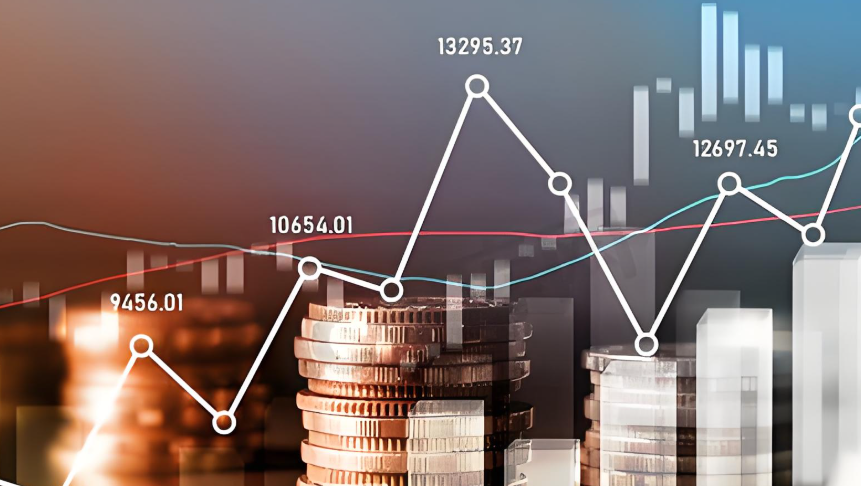The Global Economy in 2025
Advertisements
In an increasingly interconnected world, the spotlight has once again turned to the Federal Reserve as it grapples with intense scrutiny and pressure from various quartersThe current economic landscape has become nothing short of a storm for the central bank, reminiscent of its challenges during the 2008 financial crisisAs Wall Street giants take a stand against the Fed's regulatory measures, the implications for the global economy can be far-reaching.
The backdrop of this turmoil can be traced to the heart of financial regulation in the United StatesIn the wake of the financial meltdown of 2008, which nearly saw America's banking system collapse, Congress implemented the Dodd-Frank Act, mandating the Federal Reserve to conduct annual stress tests on major banksThese tests were designed to ensure that banks could withstand economic shocks, safeguarding both the institutions themselves and the broader financial system
The primary goal was to avoid a repeat of the disastrous consequences that arose from lax oversight of the banking sector.
Fast forward to the present, it appears that the very banks which were once teetering on the brink of failure are now pushing back against the fed with increasing vigorIn an unprecedented move, several of these financial behemoths banded together and filed a lawsuit against the Federal ReserveThis legal challenge highlights a growing discontent regarding the stress tests that the Fed insists upon, which some in Wall Street have begun to label as an infringement on their operations.
The lawsuit focuses on the methods and transparency of these stress testsIn March 2023, the failure of Silicon Valley Bank raised serious questions about the accuracy of the tests, particularly when the bank had passed its assessment just months earlierCritics argue that the models used for the stress tests lack clarity and fail to capture the inherent risks within the banking sector adequately.
Jerome Powell, the chair of the Federal Reserve, has acknowledged the grievances of the banks
- The AI Luminescence of a Spectral Chip
- Gold and Silver Soar to Expectations
- U.S. Stocks Fall After 25 Basis Point Rate Cut
- Gold, Silver Seen Rebounding After Dip
- Solid-State Battery Hype: Three Points for Consideration
In an effort to appease them, Powell announced potential changes to the stress testing process, stating that there would be a significant relaxation of requirements for the upcoming tests in February 2025. However, banks responded quickly, intensifying their legal battle against the Fed, suggesting that their demands were founded on a desperate need for immediate relief rather than a willingness to engage in constructive dialogue.
This conflict poses a significant conundrum, especially considering that the Federal Reserve is not just a regulatory body but also partially a private entity with close ties to the institutions it regulatesIn expecting coordination and mutual understanding between the Fed and Wall Street, the current situation appears starkly ironicThe Fed’s role was meant to act as a safeguard against the very risks that the banks now claim impede their operations.
Add to the mix the recent financial data, which paints a troubling picture of the dollar's stability
An increase in the Secured Overnight Financing Rate (SOFR) to unexpected heights just days before Christmas suggests rising nervousness in the marketsDespite the Fed's attempts to lower rates to encourage lending and liquidity, a stark contradiction appears as the SOFR surged from 4.4% to even higher levelsWhen one considers that these movements occur before significant liquidity pressures are expected, it becomes apparent that the market is reacting to fears of instability, particularly among the largest banks.
One particularly alarming development was the unexpected usage of overnight reverse repurchase agreements, a mechanism typically dormant under normal conditionsOn December 23, this facility was heavily utilized, indicating a rising demand for liquidity that the market could not meet through traditional channelsThis unexpected surge signifies that banks are desperate for funds, showcasing a precarious situation that could lead to a broader financial shake-up.
As the situation unfolds, signs of distress in Wall Street's primary dealers could signal a systemic crisis

These entities, crucial to market liquidity as agents for their clients, are reportedly unable to manage or process assets in a way that would ensure market stabilityThe aftermath was quick and severe—following these revelations, U.Sstock markets experienced a dramatic downturn, amplifying the fears circulating within financial circles.
Moreover, Powell finds himself in a precarious positionAs he tries to navigate the tumultuous waters of economic policy, he faces the wrath of both banks needing regulation and shareholders demanding profitsThe tension is palpable, and many speculate that under increasing pressure, the Fed may be compelled to abandon its tightening policies altogetherSuch a shift, however, could lead to unintended consequences, reigniting inflation and possibly triggering another economic downturn.
This situation serves as a stark warningEven as financial instruments appear stable and reserves are plentiful, the pressing reality is that liquidity issues can surface rapidly
The interplay of market forces can lead to crises—perhaps lurking just beneath the surface remains a significant threat, one that could materialize unexpectedly at any moment.
Furthermore, as the United States continues to grapple with supply chain disruptions exacerbated by geopolitical tensions and market volatility, reliance on financial markets to secure economic advantages could become a troubling trendConcurrent with rising inflationary pressures, the U.Smay resort to aggressive financial maneuvers, extracting resources worldwide to sustain its economic model.
In summary, the Federal Reserve is entangled in a multifaceted crisis—at once fighting off accusations from banks that feel encumbered by regulation, while also managing alarming indicators of financial instabilityThe stress tests that once seemed a safeguard now manifest as a source of contention, a battleground upon which the future of American banking and its economic underpinnings will be contended